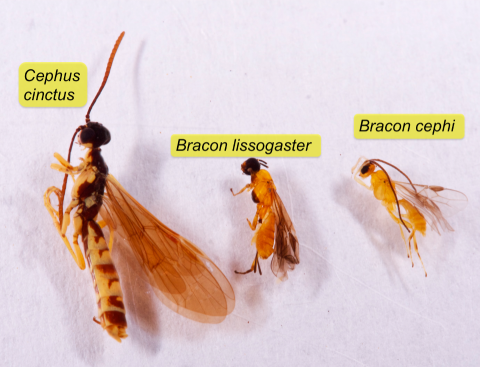Wheat Stem Sawfly Flights Peaked, New Reports of Range Expansion
June 12, 2024
In addition to confirming the presence of wheat stem sawfly in new Nebraska counties this year, Nebraska Extension anticipates fairly high pressure from the crop pest this growing season.
This Week on N Field: Army Cutworm
April 19, 2024
Now is the time to scout for army cutworm in wheat and alfalfa. Learn more about identifying army cutworm damage to crops in this new N Field Observations.
‘Great Plains Sawfly Survey Project’ Seeks Grower Input
July 6, 2023
Growers are encouraged to share their insights on controlling wheat stem sawfly through the survey, which will help a UNL-led team of researchers find improved solutions for management of this pervasive wheat pest.
Spring Miller Moth Invasion
May 23, 2023
While they don't cause damage to plants when feeding, migrating army cutworm moths can be an irksome household pest. Fortunately, there are simple management methods to prevent them from entering homes and other structures.
Wheat Stem Sawfly Emergence — Field Notes from Early June
June 7, 2021
Recent observations indicate very high populations of wheat stem sawfly in Nebraska wheat fields, with emergence not only from field edges but also deep within fallow fields. Documentation on infestations is encouraged for successful fall sawfly management.
Wheat Stem Sawfly in 2020
September 1, 2020
This article provides a brief background on how the wheat stem sawfly arrived here, ideas on how we might manage it in Nebraska and thoughts on why we saw reduced damage in some regions while others had the most damage they have ever seen.
Wheat Insect Update
January 9, 2019
A survey and landscape analysis is being conducted to better understand the ecology of both the wheat stem sawfly and its parasitoid, the most effective control method for the wheat stem sawfly in Nebraska.
Increased Wheat Stem Sawfly Populations In 2018
August 30, 2018
One of the newest challenges to wheat growers is the wheat stem sawfly, which can girdle stems, causing lodging and yield losses. University research may offer a clue to new control practices.







